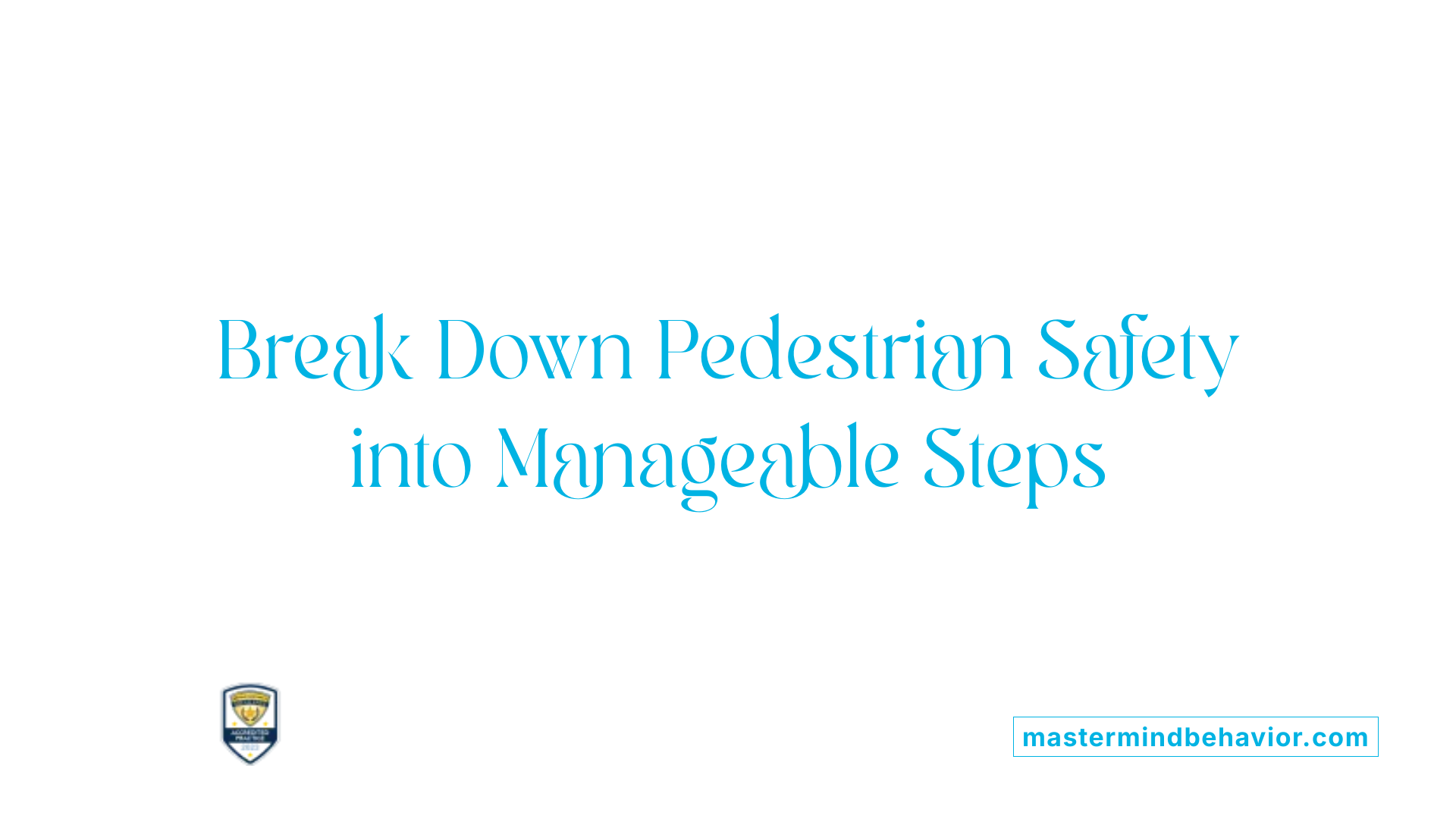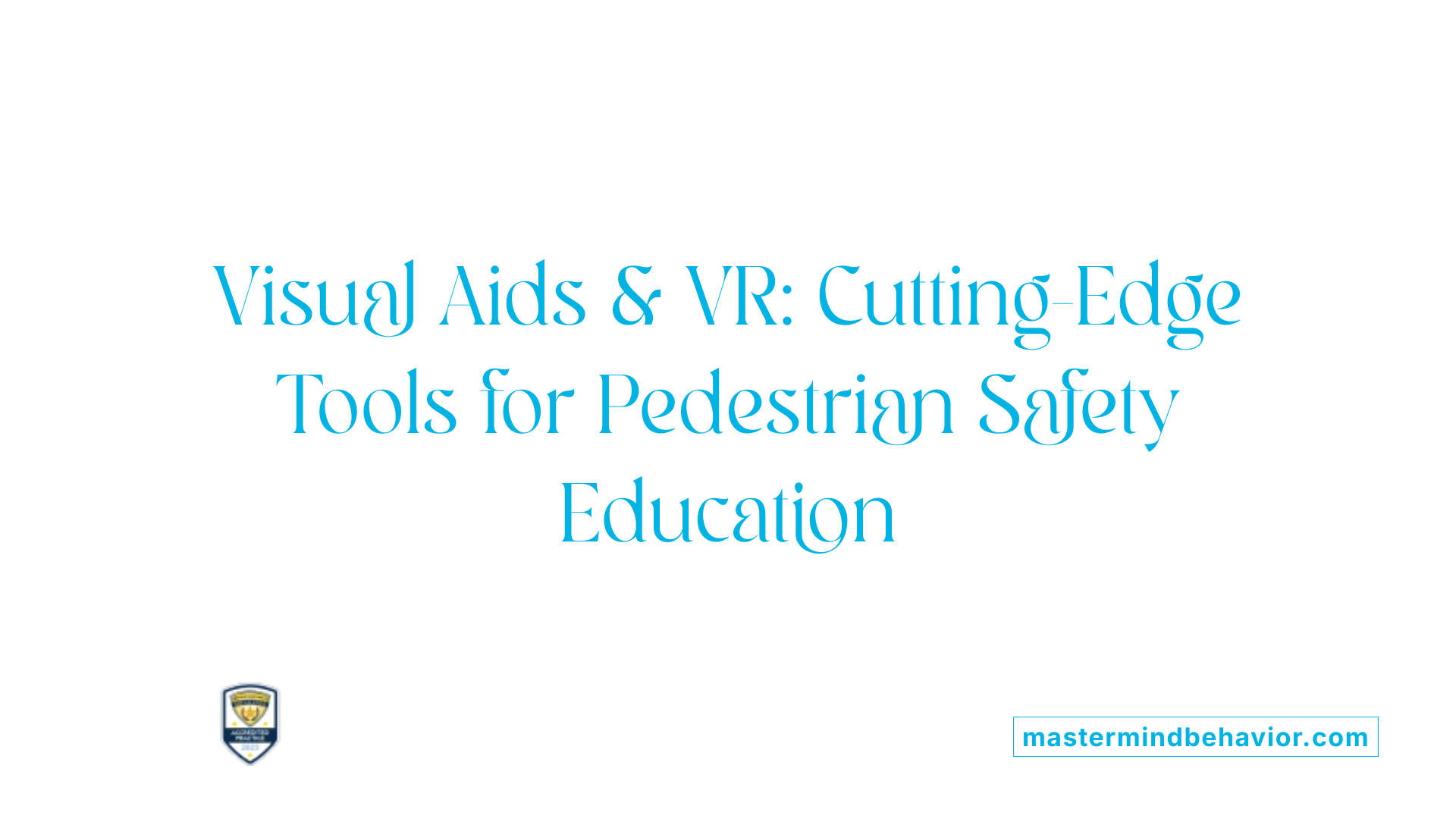Using ABA To Teach Safety Skills Like Crossing The Street

Introduction to ABA and Child Safety Skills
Applied Behavior Analysis (ABA) is a proven, systematic approach to teaching essential safety skills, such as street crossing, to children, particularly those with autism or similar needs. As safety is paramount in community environments, ABA frameworks help caregivers and educators develop structured, individualized programs that foster independence and reduce risks. This article explores how ABA can be effectively applied to teach safety skills like crossing roads, utilizing a mixture of behavioral strategies, visual supports, and real-world practice to ensure children can navigate their communities safely.
Applying Task Analysis to Teach Safe Street Crossing
 Teaching children how to cross the street safely is a crucial part of pedestrian safety education. One effective method to facilitate this learning process is through task analysis, a component of Applied Behavior Analysis (ABA). This approach involves breaking down the complex skill of street crossing into small, manageable steps.
Teaching children how to cross the street safely is a crucial part of pedestrian safety education. One effective method to facilitate this learning process is through task analysis, a component of Applied Behavior Analysis (ABA). This approach involves breaking down the complex skill of street crossing into small, manageable steps.
The first step is instructing children to always look left, then right, and left again before crossing. Reinforcing this behavior with praise encourages consistency. Next, children should learn to obey traffic signals and use designated crosswalks whenever available. When crossing at a crosswalk, children should wait for the pedestrian signal to indicate it is safe to cross.
It's vital to teach children to approach the crosswalk cautiously, making eye contact with drivers when possible, which helps confirm that vehicles see them and are stopping.
Therapists and caregivers can demonstrate these steps using role-play or modeling, providing a safe environment for practice. Visual supports like social narratives or videos further reinforce correct procedures.
To ensure generalization of skills, activities should be incorporated into various settings and with different adults, helping children apply their knowledge in real-world scenarios.
| Step in Crossing | Description | Additional Tips |
|---|---|---|
| Approach curb | Stop at the curb and prepare to cross | Use visual cues or prompts to prompt stopping |
| Look both ways | Check traffic from left, right, then left again | Reinforce with praise or rewards |
| Obey signals | Wait for walk sign or green light | Teach recognition of signals using visual supports |
| Cross safely | Walk carefully, keeping watching for cars | Maintain eye contact with drivers if possible |
| Finish crossing | Reach the other side and look again | Celebrate the successful crossing |
Employing these steps, taught and reinforced systematically, enhances children's ability to cross streets safely, reducing the risks they face near traffic. Consistent practice combined with positive reinforcement and modeling ensures that children develop lasting safety behaviors.
Strategic Use of Reinforcement and Modeling in Pedestrian Safety Training
 Teaching children to navigate traffic safely involves more than simple instruction; it requires effective techniques rooted in behavioral science, particularly Applied Behavior Analysis (ABA). Positive reinforcement plays a crucial role by encouraging children to consistently practice safe pedestrian behaviors. When children receive praise, rewards, or other forms of positive feedback for correctly crossing the street, they are more likely to repeat those behaviors.
Teaching children to navigate traffic safely involves more than simple instruction; it requires effective techniques rooted in behavioral science, particularly Applied Behavior Analysis (ABA). Positive reinforcement plays a crucial role by encouraging children to consistently practice safe pedestrian behaviors. When children receive praise, rewards, or other forms of positive feedback for correctly crossing the street, they are more likely to repeat those behaviors.
Role-playing activities and modeling are also essential components. Caregivers, teachers, or role models demonstrate safe crossing practices, such as looking both ways, crossing at crosswalks, and making eye contact with drivers. Repeatedly observing these behaviors helps children understand and imitate them effectively. Visual aids, social stories, and videos supplement these techniques, especially when teaching children with autism spectrum disorder (ASD) or those who need additional support.
To ensure safety skills are understood in various environments, generalization strategies are employed. This involves practicing pedestrian safety in different settings—parked in parking lots, crossing busy intersections, or navigating school zones. Consistent reinforcement across environments helps children apply learned behaviors independently and confidently.
In terms of implementation, behavioral skills training (BST) is highly effective. BST incorporates instruction, modeling, rehearsal, and positive reinforcement to teach complex behaviors like crossing safely. Breaking down tasks into simple steps, such as stopping at the curb, pressing traffic buttons, and looking for traffic signals, makes learning manageable and clear.
Visual supports such as Boardmaker symbols and social narratives reinforce safety routines and make expectations explicit. These tools help children, particularly those with ASD, understand and recall safety procedures in real-world situations.
Collaboration with caregivers and educators ensures consistency. Reinforcing safety behaviors across all environments, including at home, school, and community outings, increases the likelihood of maintenance of these behaviors.
Research supports the use of virtual environments to teach crossing skills, providing a safe space for practice. Overall, combining reinforcement, modeling, visual supports, and environmental modifications creates a comprehensive approach that fosters independent and safe pedestrian behaviors among children.
Enhancing Safety Learning with Visual Supports and Virtual Reality
 Using visual aids such as social stories and symbols can significantly improve children's understanding of pedestrian safety rules. These tools depict step-by-step procedures like stopping, looking, and waiting for signals—vital actions for safe street crossing. Visual supports, including Boardmaker symbols and social narratives, serve to clarify instructions and reinforce safe behaviors in an engaging manner.
Using visual aids such as social stories and symbols can significantly improve children's understanding of pedestrian safety rules. These tools depict step-by-step procedures like stopping, looking, and waiting for signals—vital actions for safe street crossing. Visual supports, including Boardmaker symbols and social narratives, serve to clarify instructions and reinforce safe behaviors in an engaging manner.
The integration of virtual reality (VR) training advances this educational approach further. VR allows children to simulate real-world crossing scenarios in a controlled, safe environment. This immersive experience helps children practice safety skills repeatedly without real-world risks, increasing confidence and competence.
Research indicates that employing VR and visual supports not only facilitates better understanding of how to cross streets safely but also promotes the transfer of these skills outside classroom settings. Reinforcing safety lessons through visual aids ensures children can learn at their own pace and revisit concepts as needed.
Are there resources or social stories available for teaching street crossing safety with ABA?
Yes, numerous resources are available. One dedicated website offers seven social stories focusing on various aspects of road safety such as recognizing vehicles, practicing safe walking habits, staying on footpaths, and crossing at crosswalks and signals. These stories are tailored for children with autism and can be adapted to meet individual learning needs. They serve as effective educational tools within an ABA framework, helping children develop safer crossing behaviors.
| Resource Type | Focus Area | Implementation Tips |
|---|---|---|
| Social Stories | Street crossing, road safety | Use visuals, repeat practice, customize for individual needs |
| Virtual Reality | Crossing skills practice | Create realistic scenarios, allow repeated practice, monitor engagement |
| Visual Symbols | Signage, signals | Use at crossings and intersections to reinforce safe behaviors |
By combining these methods, educators and parents can create a comprehensive safety education program tailored to children’s specific needs, promoting independence and safety awareness in community settings.
Integrating Technology and Environmental Strategies into Safety Education
Using innovative methods combining technology and environmental modifications can significantly enhance pedestrian safety education for children.
One effective technological tool is the virtual environment, which allows children to practice crossing streets safely in a simulated setting. Studies have shown that virtual environments can be a valuable part of a broader educational program, giving children a risk-free space to learn about traffic signals, crosswalks, and the proper way to observe traffic before crossing. These simulations help children develop confidence and decision-making skills when they are in real-world situations.
In addition to virtual tools, traffic calming measures and strategic signage play pivotal roles in creating safer streets for children. Traffic calming measures include features like speed bumps, chicanes, and curb extensions, which naturally slow down vehicle traffic in busy areas. Proper signage, including crosswalk markings and pedestrian crossing signals, guides children and drivers, making pedestrian crossings clearer and safer.
| Strategy | Purpose | Example | How It Helps |
|---|---|---|---|
| Virtual Environments | Practice crossing skills in a controlled setting | Simulator software | Builds confidence, reduces fear, improves decision-making |
| Traffic Calming Measures | Reduce vehicle speed and enhance pedestrian safety | Speed bumps, curb extensions | Decreases risk of accidents, encourages safe crossing positions |
| Signage and Signals | Provide clear visual cues for pedestrians and drivers | Crosswalk markings, traffic lights | Guides use, increases visibility, and reduces confusion |
Effective pedestrian safety education requires an integrated approach. It combines teaching children safe practices—such as crossing only at crosswalks and maintaining vigilance—with environmental changes that make streets safer. Adapting these strategies helps foster safer community environments and better prepares young pedestrians for independent travel.
Educational programs should promote consistent reinforcement of safety behaviors, whether through direct instruction, visual supports, or environmental cues. When combined, technology and environmental modifications create a comprehensive safety net that supports children’s development of good pedestrian habits, making their journeys more secure.
Fostering Safe and Autonomous Communities
Incorporating ABA into safety skill education provides a structured, effective, and adaptable framework for teaching children, especially those with autism, essential community safety skills like street crossing. By combining task analysis, reinforcement, visual supports, and innovative technologies such as virtual reality, caregivers and educators can foster safe independence. Promoting consistent practice, modeling safe behaviors, and engaging children in real-world scenarios ensure these skills are internalized and generalized across various environments. Ultimately, the goal is to empower children to navigate their communities safely, confidently, and independently, thereby contributing to safer neighborhoods for everyone.
References
- Teaching Kids About Pedestrian Safety - Zero Deaths Maryland
- Make Sure Kids Follow Important Safety Rules When Walking
- Safe Routes to School Online Guide | FHWA
- Crossing the Road - Life Skills Resource
- 10 Common ABA Therapy Techniques
- ABA relies on principles of learning and behavior ...
- Teaching Safety Responding to Children with Autism ...
- Strategies For Enhancing Safety For Autistic Children
- Safety skills
- Free library of Social Stories for Autism
Recent articles

Strategies For Building Peer Relationships Through ABA Social Skills Training
Building Meaningful Peer Connections with ABA-Based Social Skills Training

How ABA Therapy Improves Communication With Teachers And Peers
Empowering Social Connections: The Role of ABA Therapy in Autism

How ABA Therapy Encourages Teamwork And Cooperation Skills
Unlocking Social Success: The Role of ABA Therapy in Fostering Teamwork and Cooperation

Teaching Coping Skills For Test Anxiety Through ABA Therapy
Harnessing ABA Therapy to Equip Children with Autism Against Test Anxiety

ABA Therapy For Supporting Flexibility In Changing Schedules
Navigating Change: ABA Therapy as a Lifeline for Flexible Routines

How ABA Therapy Improves Coping During Times Of Transition
Navigating Change with Confidence: The Role of ABA Therapy



